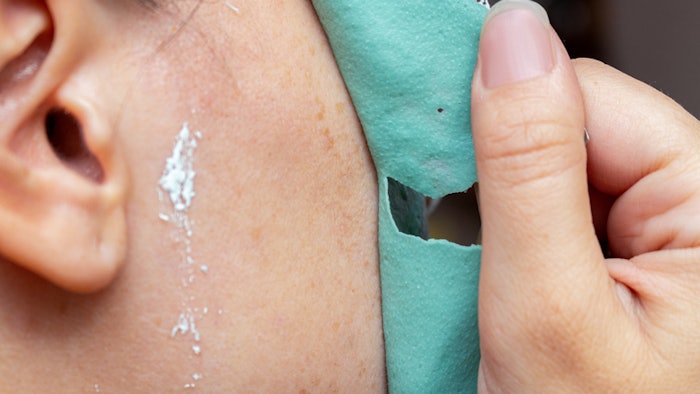
As we get into fall, many spa professionals will be working to rescue clients' sun damaged skin. Sun damage leaves discolorations which look like pigment spots, darker discolorations and freckles—all forms of hyperpigmentation. Here are my top five tips to repair these issues.
1. Acids and Enzymes
Skin discolorations could be on the surface or affect very deep layers of the skin. Surface spots are very easy to remove with gentle exfoliation, such as a natural enzyme peel or microdermabrasion.
If we are talking about dermal sun damage that is very deep, like melasma, it could take much longer. That time can vary and is also related to the client's hormonal activity. Those who are pregnant or on medications that elevate their estrogen (like birth control or hormonal therapy) can exhibit more photosensitivity. Other medication types can also affect that, so some guests are more prone to sun damage than others.
When we approach any hyperpigmentation, surface or deep inside, we have to work in two directions simultaneously. To reduce discoloration, we may use topicals containing ingredients like mandelic, kojic or azelaic acids, some of the most potent acids to lighten up hyperpigmentation. I also recommend using highly concentrated hydrogen peroxide.
2. Antioxidants
Hyperpigmentation/sun damage results from oxidative stress when the skin is damaged on a cellular level, and powerful antioxidants like resveratrol help heal and restore the skin when applied topically and taken internally. Then, we need to treat that area with a powerful blend of antioxidants that can reduce discoloration.
The approach should be double: Bleach the skin with something natural and use antioxidants to heal the skin cells in that area. If you do not use antioxidants and only bleach, the hyperpigmentation will return because the skin regenerates from the inside out. This is because, during sun damage, the oxidative stress will cause the skin to regenerate the damaged, discolored cells in that area. Your must restore it on a cellular level with antioxidants.
3. Eat the Rainbow
It’s important to eat colorful fruits and vegetables; they are filled with antioxidants and will restore the skin from the inside out. Even a good supplement will help.
Purple-colored berries and vegetables, like blueberries and eggplant, are essential because they contain anthocyanoside, a potent antioxidant. Some organic spas not interested in using acid peels can even offer face massages with actual slices of eggplant or mushroom.
Speaking of which, mushrooms naturally contain kojic acid, which helps to reduce discoloration in the skin. All mushrooms you can find in the store also have a very high concentration of antioxidants which also lighten spots and help restore cells from oxidative stress.
4. Soothing Sunburns
Sea buckthorn has the most balanced healing cocktail of vitamins and micronutrients, like beta keratin, omega-7 and others. It is often taken internally to heal the digestive system and used topically to soothe and restore the skin after sun damage, trauma and burns. It also has an antiseptic effect and helps balance the skin microbiome by reducing pathogens.
5. Check Skin Spots
If you notice a mole or dark spot is getting darker or changing shape, recommend that your client visits a dermatologist for professional help—and this is good advice for you, too. Be sure you look for areas on your skin that look red and scaly, and do not seem to be healing no matter what you do. Overall, it is good to check the moles on your body every year professionally.











